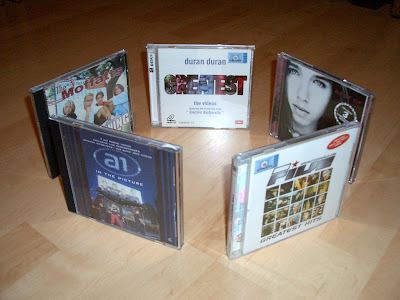 I don't watch very many movies, but when I come across one like this it makes me wonder why I don't, and how many more jewels are out there that I haven't discovered yet. This one is an unassuming little documentary, originally produced for British TV and receiving only a limited U.S. theatrical run before its DVD release in the fall of 2008. Titled "Young@Heart", it follows a chorus of the same name, formed in 1982 in Northampton, Massachusetts.
I don't watch very many movies, but when I come across one like this it makes me wonder why I don't, and how many more jewels are out there that I haven't discovered yet. This one is an unassuming little documentary, originally produced for British TV and receiving only a limited U.S. theatrical run before its DVD release in the fall of 2008. Titled "Young@Heart", it follows a chorus of the same name, formed in 1982 in Northampton, Massachusetts.What's different about Young@Heart is that its 20-odd singers range between 73 and 93 years of age (at the time of the film). But that's not the only twist -- instead of singing the kind of stuff they grew up with, like Sinatra, Bing Crosby, or Perry Como, their director Bob Cilmi has assembled a repertoire that includes contemporary and classic rock and pop tunes made famous by artists ranging from The Rolling Stones, Jefferson Airplane, and James Brown, to Coldplay, Outkast, and Sinead O'Connor.
It would have been tempting to make this a warm and fuzzy "feel-good" movie from beginning to end, but the film's director Stephen Walker instead chose a much more substantial approach, giving equal time to the happy moments -- the triumph of a fine performance, the sharing of a good age-related joke -- and the not-so-happy -- the frustration of trying to learn a difficult song, the tragic reminders of how precarious the health of the elderly can be.
Movies almost never make me cry, but this one did, more than once. I cried tears of joy at the outpouring of appreciation, complete with handshakes and hugs, that the chorus received from an audience of inmates after a performance at an area prison, having heard just minutes before showtime about the sudden death of their fellow singer, Bob Salvini. And I cried tears of sadness when Fred Knittle (the irrepressibly witty and charming bass of the group) took the stage during a concert highlighted at the film's finale to sing a solo rendition of Coldplay's "Fix You", which was to have been a duet with Salvini but was instead dedicated to him.
The Young@Heart chorus members might not always sing on key, or even in time with the music, so you'd think that the movie's soundtrack album wouldn't be enjoyable. But the exuberant joy, the playful fun, and the tender poignancy they seem to effortlessly bring to every song make any of the shortcomings they may have in rhythm and melody totally beside the point. I can't help but smile when I hear Dora and Stan belt out their best James Brown cries in "I Feel Good", and I feel along with them the payoff of their aggravating rehearsals when they finally nail the lyrics to The Pointer Sisters' "Yes We Can Can" ... but on the other hand, I don't think I'll ever be able to listen to Coldplay's "Fix You" again without feeling a lump in my throat.
One of the greatest things about the end of the movie, and the live in-concert tracks on the soundtrack album, is the age range of the audience in attendance ... there were people ranging in age from 6 to 90, and they all had fun. I had a lot of fun, too, especially listening to the younger members of the audience erupting in approval and recognition when Young@Heart started in on their adventurous rendition of "Hey Ya". All in all, the more you like music, the more you need to see this movie ... and the more likely you'll end up buying the soundtrack, too. (I myself had to spring for the 2-disc deluxe import edition, which was well worth it!)


